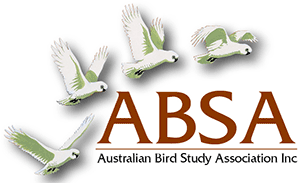DETECTABILITY OF BIRDS THROUGH THE DAY IN SOFTWOOD SCRUB REMNANTS AND OPEN EUCALYPT FOREST ALONG ROADSIDES AT TALLEGALLA, SOUTH-EAST QUEENSLAND
| Posted: |
10/08/2021 |
| Author(s): |
D. J. Watson, G. J. Leach |
Strip transects (300 x 40 m) through softwood scrub remnants and eucalypt open-forest along
roadsides in south-east Queensland were censused from sunrise to mid-afternoon to determine diurnal
changes in detectability of bird species and individuals. Censuses, comprising two consecutive
40-minute surveys by two teams of 2 to 4 persons, were repeated four times on each of four days
over a year.
Fifty-eight species were observed in the softwood scrub and 56 in the eucalypt forest. There were
29 to 40 species and 206 to 400 individual observations per habitat per day. Total number of species
and individuals was usually low just after sunrise then increased to a relatively stable level for the
remainder of the day in the softwood scrub but declined from early- or mid-morning peaks in the
eucalypt forest. However, diurnal patterns of detectability differed between species.
We conclude that total numbers of species and individuals censused on strip transects in
communities as rich as those at Tallegalla are largely independent of the time of day, provided the
first 1 to 2 h after sunrise are avoided. Censusing should therefore aim to maximize habitat and
seasonal replication rather than establish diurnal trends. Where the avifauna is less rich. or emphasis
is on a small subset of species, census times will need to be compatible with diurnal changes in
detectability.
>> Download Abstract |
File Size: 87KB
>> Download Complete PDF | File Size: 1MB
